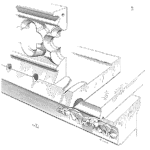
Providing Solutions as a Reliability Engineer
Abstract
John and Fred discussing the problem of only bringing failures to a team. We often are the bearers of bad news.
ᐅ Play Episode
Your Reliability Engineering Professional Development Site
by John Paschkewitz Leave a Comment

John and Fred discussing the problem of only bringing failures to a team. We often are the bearers of bad news.
ᐅ Play Episode

Kirk and Fred discussing how to show management and other skeptics of highly accelerated limit testing how valuable it can be in improving reliability.
ᐅ Play Episode
by Fred Schenkelberg Leave a Comment

Your team may understand the system reliability goal, yet they should know the goal for the element they are addressing. Let’s discuss why you must do reliability apportionment. Plus, let’s explore how it benefits your team.
[Read more…]
by James Kovacevic Leave a Comment

In this episode, the guest Scott Kelley explains the role of the people component in the asset management model. Asset management is the most effective way of making the best use of investment and improve the production level of any organization. There are total six components in the model; people, plant, processes, policies and procedures, performance, and proactive maintenance. The people factor is of top priority among all of these factors. Why is the people component most important? Well, considering even if you have excelled in every other cell, you are going to need people to manage all of these and above all well trained and skillful people to make this work. Now, this cell in the model contains things such as organizational development, organizational structure, continuous improvement, change management, and operational excellence.
ᐅ Play Episode

Kirk and Fred discussing how to determine when HALT failures are relevant or not relevant to what actually may fail in the field.
ᐅ Play Episode
by James Kovacevic Leave a Comment

James and Fred discussing the connections and differences between these two terms.
ᐅ Play Episode
by James Kovacevic Leave a Comment

In today’s episode, the guest Tara Holwegner explains the role of stakeholders and the management in an organization. It is very common that many new projects and big initiatives take place in the organizations but most of these don’t succeed or generate results as expected even if they have the potential. The problem in these cases is the little transfer of information, lack of communication, and incoherent business objectives. [Read more…]
by Carl S. Carlson Leave a Comment

Carl and Fred discussing when a Parameter Diagram is useful in reliability programs.
ᐅ Play Episode
by Carl S. Carlson Leave a Comment

Carl and Fred discuss the subject of robust design, what it is, and how it relates to reliability programs.
ᐅ Play Episode
by James Kovacevic Leave a Comment

In today’s episode, the agenda of discussion is utilizing multiple layers of protection for the products or assets of an organization. The plant itself and some other resources are very critical to the value of production of bigger companies. They can’t afford to have a failure because of the tight deadlines and allocation of specific budgets. That’s why it is always a good practice to have backups and their backups as well.
ᐅ Play Episode
by Adam Bahret Leave a Comment

Adam and Fred discuss how to estimate and communicate the needed samples to execute the planned reliability test program.
ᐅ Play Episode
by Adam Bahret Leave a Comment

Adam and Fred discussing how to balance product development, time to market, product cost, product features and product reliability with consistent methodology.
ᐅ Play Episode
by James Kovacevic Leave a Comment

In this episode, the guest Dan Anderson explains the role of Reliability Assessments in the organizations. Whenever an organization starts its journey towards the reliability excellence, it has to start by considering some things. One of the very first steps is to create awareness among all the employees. The workforce needs to understand and learn about the goals and objectives of the organization. Now once the employees have sufficient understanding, they should be ready to cooperate in any way organization needs them for a better and long term reliability plan.
ᐅ Play Episode
by James Kovacevic Leave a Comment

James and Fred discussing how to determine the right initial investment in your reliability program.
ᐅ Play Episode
by John Paschkewitz 4 Comments

John and Fred discussing how to know you have sufficient failure analysis to stop pursuing the analysis.
ᐅ Play Episode
 Ask a question or send along a comment.
Please login to view and use the contact form.
Ask a question or send along a comment.
Please login to view and use the contact form.